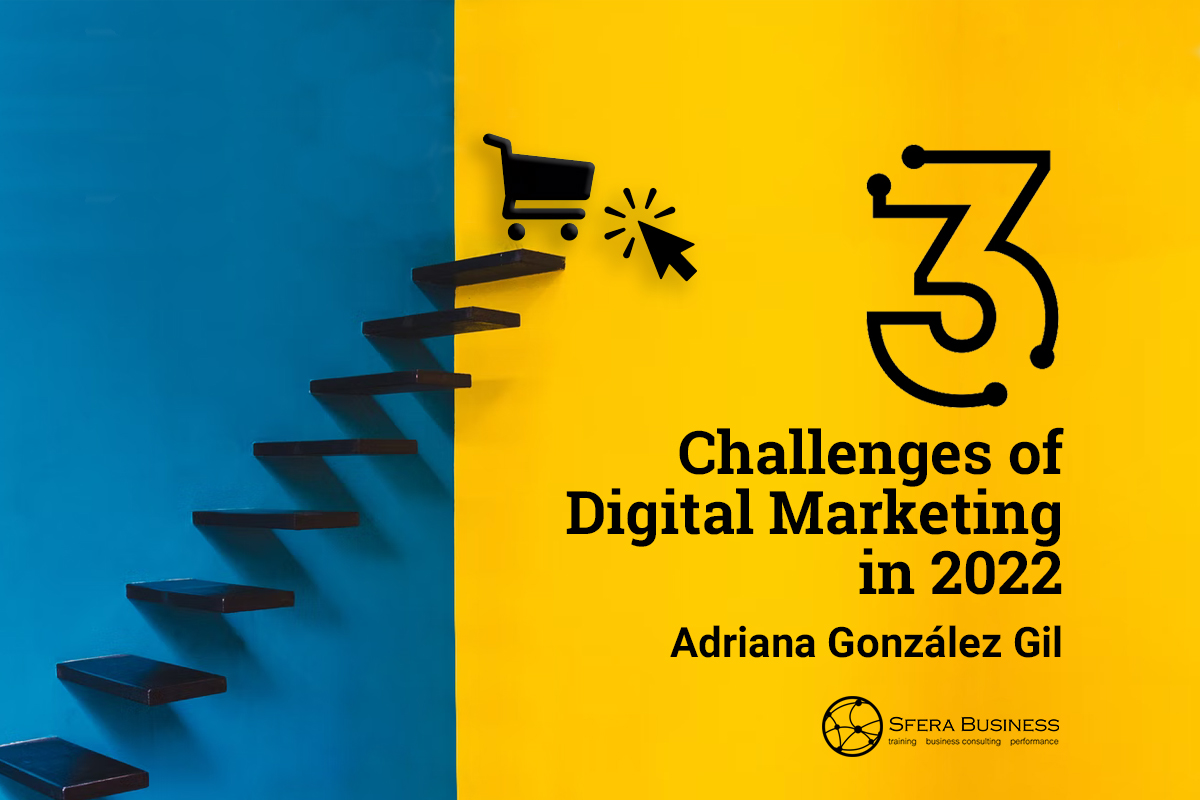Adriana González Gil –
It’s already old news to say that Covid-19 drastically accelerated digital business models and changed consumer behavior forever. So, if we’re trying to build brands during this global crisis and beyond, what should we learn from the pandemic? How do we approach a new kind of customer that expects that any experience will be frictionless, anticipatory, relevant and connected to their values?
Here are some of the main challenges for Digital Marketing during 2022:
1- Personalization and segmentation are a priority
Last year Harvard Business Review already pointed out that a new truth in the post-Covid world is that “ Marketing begins with knowing your customer segment”. Creating human connections requires personally relevant messages and websites, that take into account the multiple dimensions that influence purchasing behavior, from psychographics to attitudinal characteristics.
Beyond geography, we have learned marketing messages need to be personally relevant, aligned to an individual’s situation and values, as opposed to demographics, such as age and gender.
One keystone to tackle this need of targeting various segments with different strategies is dynamic content on your website, so that individual visitors can see the products most likely to motivate their action.
Basically, once you have defined target groups of consumers based on all the insights you can gather, use smart products recommendations or even completely customised landing pages, and test different content for each segment.
2- Creating trust: Aligning with new values through old and new channels
Not-surprisingly, recent research by McKinsey and the EY Future Consumer Index have both shown that affordability (economic wellbeing) and health are top-of-the-mind concerns for most consumers. And while as the pandemic recedes some activities will go back to normal, some trends are here to stay. For example, Millennials and Gen Z are widely adopting contactless activities such as click-and-collect and self-checkout and they indicate the intention to continue.
Marketing professionals, therefore, need to think of a broader range of shopping experiences that will require greater coordination with sales and operations to be able to innovate and respond to the need of consumers to mix digital and off-line channels to convenience. Creating these experiences requires companies to place data and technology at the core of their organization. This likely means bringing some degree of machine learning and/or artificial intelligence into the mix.
3- Data management
Data is crucial for all Marketing activities nowadays. From segmentation to innovation and detection of new market opportunities. Yet, data management continues to be a problem, both for businesses that struggle with unconnected data sets that provide them with only a partial view of customer behavior, and for consumers who are more aware than ever of the information they want to share with companies.
Global Marketing consultant Tim Parking says as quoted by Forbes that
“The war on data will escalate and marketers will lose access to more data they have come to rely on (…) First-party data will become the foundation of all marketing initiatives. Many organizations, who have not prepared, will scramble to collect this data to stay competitive.”
Moreover, Forbes has identified Foresight as a new digital marketing priority in 2022.
So, we need more data but will have more restrictions to access it.
How do we get this first-party data? You can start by unifying the incoming data from your digital channels in a Customer Data Platform, to get a comprehensive picture of each customer that can help you segment and execute better strategies. You also can (and at this point, almost must!) rely on innovation. Research has gone beyond what we thought possible in marketing and trends like neuromarketing and artificial intelligence applied to predicting shopping behavior are not only available at prices that most companies can afford, but are already being used by many to get data directly from the brain, unbiased, and unrestricted by the limits of traditional polling and surveying.
“As marketers, we are charged with a continued blend of art and science. We must achieve the perfect balance of humans and automation to unlock a future of better analytics and deployment of AI at scale. We must use data as the fuel yet respect the craft of storytelling to drive meaningful human connections. We must tread a fine line between brand marketing and performance marketing, recognizing that we currently have a bias toward what we can readily quantify. And we must understand what should be centralized and what should be bespoke, identifying where consistency helps and where it hinders.”
This blend of art and science, and the need to embrace new technologies while using old technologies in a new way, understanding better the data they have been providing all along to drive growth in a post-Covid world is what we cover in our Digital Marketing training. If you want to know more, contact us to get a custom proposal adapted to your team and industry’s needs.

